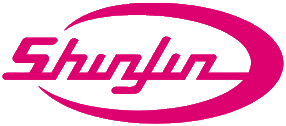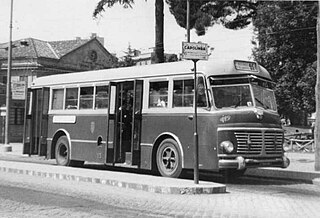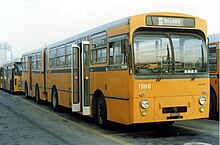
Lancia is an Italian car manufacturer and a subsidiary of FCA Italy S.p.A., which is currently a Stellantis division. The present legal entity of Lancia was formed in January 2007 when its corporate parent reorganised its businesses, but its history is traced back to Lancia & C., a manufacturing concern founded in 1906 in Torino by Vincenzo Lancia (1881–1937) and Claudio Fogolin. It became part of Fiat in 1969.

The Porsche 804 is a single-seat, open-wheeled racing car produced by Porsche to compete in Formula One (F1). It raced for a single season in 1962 in the 1½ litre formula.

The Lancia Stratos HF, known as Lancia Stratos, is a rear mid-engined sports car designed for rallying, made by Italian car manufacturer Lancia. It was a highly successful rally car, winning the World Rally Championship in 1974, 1975 and 1976; and race car winning 1974 Targa Florio, five times the Tour de France Automobile and three editions of Giro d'Italia automobilistico.

The International Harvester Company was an American manufacturer of agricultural and construction equipment, automobiles, commercial trucks, lawn and garden products, household equipment, and more. It was formed from the 1902 merger of McCormick Harvesting Machine Company and Deering Harvester Company and three smaller manufacturers: Milwaukee; Plano; and Warder, Bushnell, and Glessner. Its brands included McCormick, Deering, and later McCormick-Deering, as well as International. Along with the Farmall and Cub Cadet tractors, International was also known for the Scout and Travelall vehicle nameplates. In the 1980s all divisions were sold off except for International Trucks, which changed its parent company name to Navistar International.

The Lancia Aurelia is a car produced by Italian manufacturer Lancia from 1950 to the summer of 1958. It is noted for using one of the first series-production V6 engines. Several body styles were offered: 4-door saloon, 2-door GT coupé (B20), 2-door spider/convertible (B24), and a chassis to be custom bodied by external coachbuilders.

The Lancia Fulvia is an automobile produced by Lancia between 1963 and 1976. Named after Via Fulvia, the Roman road leading from Tortona to Turin, it was introduced at the Geneva Motor Show in 1963 and manufactured in three variants: Berlina 4-door saloon, 2-door Coupé, and Sport, an alternative fastback coupé designed and built by Zagato on the Coupé floorpan.

The Lancia Beta was an entry-level luxury car produced by Italian car manufacturer Lancia from 1972 to 1984. It was the first new model introduced by Lancia after it had been taken over by Fiat in 1969.

The Lancia Flaminia is a luxury car produced by Italian automaker Lancia from 1957 until 1970. It was Lancia's flagship model at that time, replacing the Aurelia. It was available throughout its lifetime as saloon, coupé and cabriolet. The Flaminia coupé and cabriolet were coachbuilt cars with bodies from several prestigious Italian coachbuilders. Four "presidential" stretched limousine Flaminias were produced by Pininfarina for use on state occasions.

The Lancia Appia is a passenger car introduced in 1953 by Italian car manufacturer Lancia as a replacement for the Ardea, and which remained in production for ten years. The Appia was the last in a long line of Lancia production cars dating back to the Lancia Lambda to use sliding pillar front suspension. All three series produced had a 1089cc Lancia V4 engine.

A V8 engine is an eight-cylinder piston engine in which two banks of four cylinders share a common crankshaft and are arranged in a V configuration.

The Alfa Romeo Romeo is a light commercial, cabover van and pickup truck that was introduced by the Italian automaker Alfa Romeo in 1954 as the Alfa Romeo Autotutto. The line of vans continued to be built until 1983, when it was replaced by relabelled Fiat and Iveco commercials.

In 2015 Spain produced 2.7 million cars which made it the 8th largest automobile producer country in the world and the 2nd largest car manufacturer in Europe after Germany. The forecast as of 2016 was to produce a total of 2.8 million vehicles from which about 80% is for export. During the first half of 2016, with exports valued over 24 billion euros over that period, the automotive industry accounted for 18.9% of the total Spanish exports.

Shinjin Motors or Sinjin Motors is a defunct South Korean car manufacturer.
The Lancia Ro, Lancia Ro-Ro and Lancia 3Ro were 4x2 heavy trucks built by Italian manufacturer Lancia from the 1930s through the 1940s for military and civilian use. The 2-cylinder diesel Ro was produced from 1933 to 1939, the 3-cylinder diesel Ro-Ro from 1935 to 1939 and the improved 5-cylinder diesel 3Ro from 1938 to 1947.

Lancia Omicron is a bus chassis produced by the Italian manufacturer Lancia. Production of the Omicron started in 1927 and ended in 1936 after 601 total models were built.

Lancia Esatau is a series of truck and bus chassis produced by Italian manufacturer Lancia Industrial Vehicles from 1947 to 1973. 13,362 examples were produced.
The Lancia Trijota is one of the first buses produced by the Italian vehicle manufacturer Lancia. The bus was produced from 1921 to 1925.

The Lancia Jota is a series of truck and bus chassis produced by Lancia between 1915 and 1935. The original 1915 Jota was the first true Lancia truck; throughout the following two decades it was made in a number of different series and variants, each identified by a progressive Greek numeral prefix added to the name, from Djota to the last Eptajota. While axle tracks, wheelbase and equipment gradually grew, the original layout and 4,940 cc four-cylinder petrol engine were retained.

Alfa Romeo 140AF is an Italian trolleybus produced from 1949 to 1960.
The Lancia 1Z was a light military truck produced by Italian manufacturer Lancia between 1912 and 1916. From a mechanical standpoint, it was closely related to the 1913 35 HP Theta passenger car. It was Lancia's first military vehicle.



















